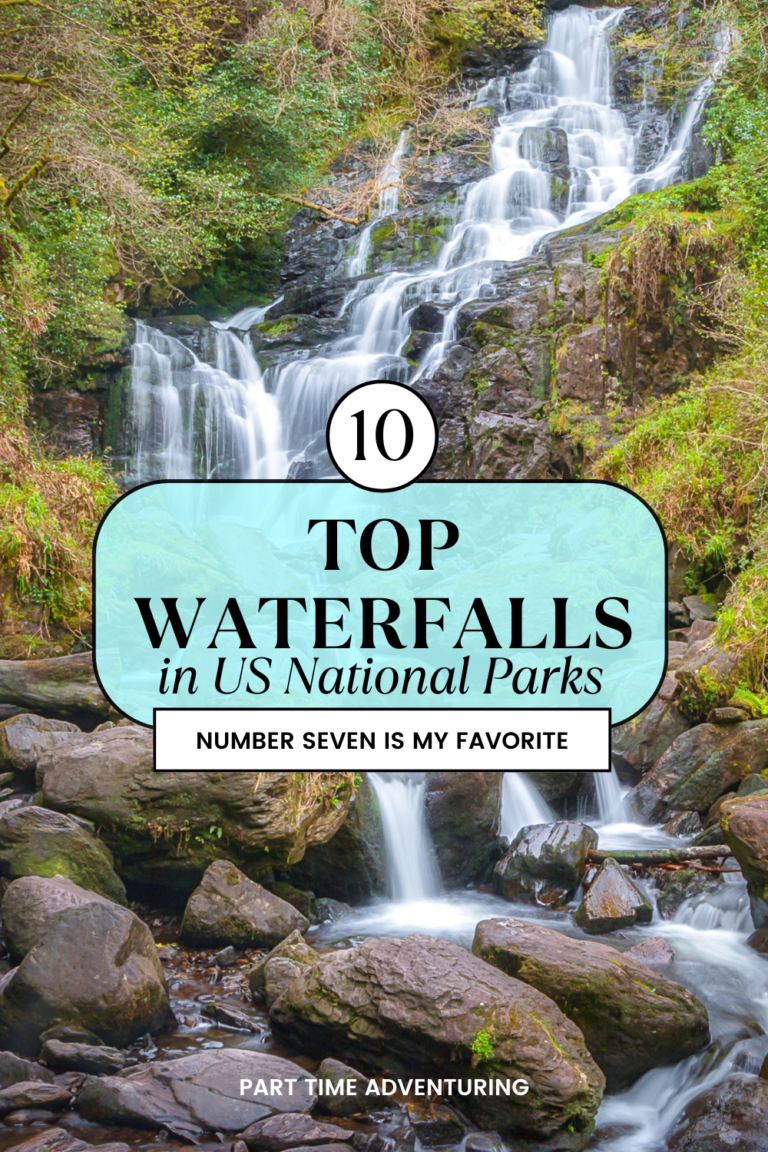Exploring the natural wonders of US National Parks wouldn’t be complete without marveling at some of the most stunning waterfalls in the country. These cascading beauties are perfect for photographers, hikers, and nature enthusiasts alike. Knowing the best time to visit these top waterfalls in US National Parks ensures you’ll see them at their peak beauty. Below are the top waterfalls in US National Parks, featuring detailed trail information, best times to visit, trail conditions, and more.
The Top 10 Waterfalls in US National Parks
1. Yosemite Falls – Yosemite National Park (California)
Trail Details:
- Trail Name: Yosemite Falls Trail
- Distance: 7.2 miles roundtrip
- Elevation Gain: 2,700 feet
- Difficulty: Strenuous
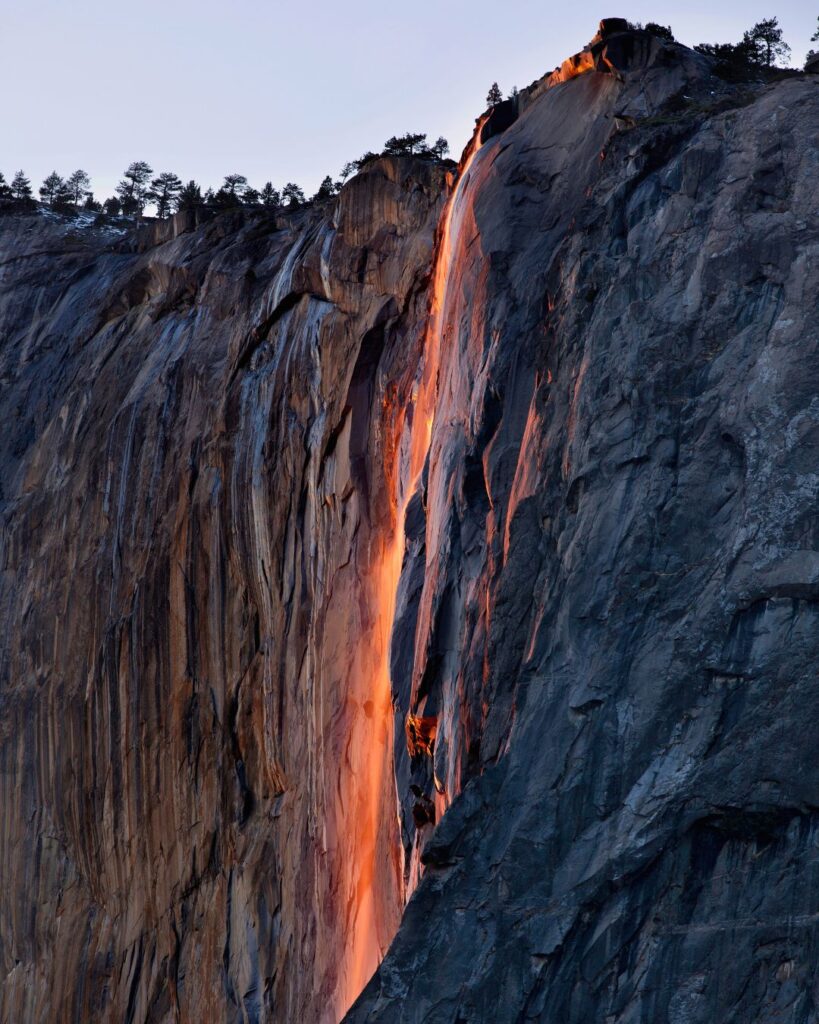
Best Time to Visit:
Yosemite Falls is at its peak flow in spring (April to May) when snowmelt from the Sierra Nevada feeds the cascade. Late summer often sees diminished flow, and the falls may dry up entirely by autumn. Arrive early to avoid summer crowds.
Trail Conditions:
- Spring: Wet and muddy from snowmelt. Sturdy boots are recommended.
- Summer: Hot and dry; carry plenty of water.
- Winter: Icy trails require crampons or microspikes for safety.
2. Tower Fall – Yellowstone National Park (Wyoming)
Trail Details:
- Trail Name: Tower Fall Trail
- Distance: 0.8 miles roundtrip
- Elevation Gain: Minimal
- Difficulty: Easy
Best Time to Visit:
Tower Fall is most impressive in spring and early summer, when snowmelt swells the Yellowstone River. Visit in the morning for fewer crowds.
Trail Conditions:
- Spring: Potentially muddy trails due to melting snow.
- Summer: Dry and easy to navigate; watch for afternoon thunderstorms.
- Fall/Winter: Sections of the trail may close due to snow and ice.
3. Bridalveil Fall – Yosemite National Park (California)
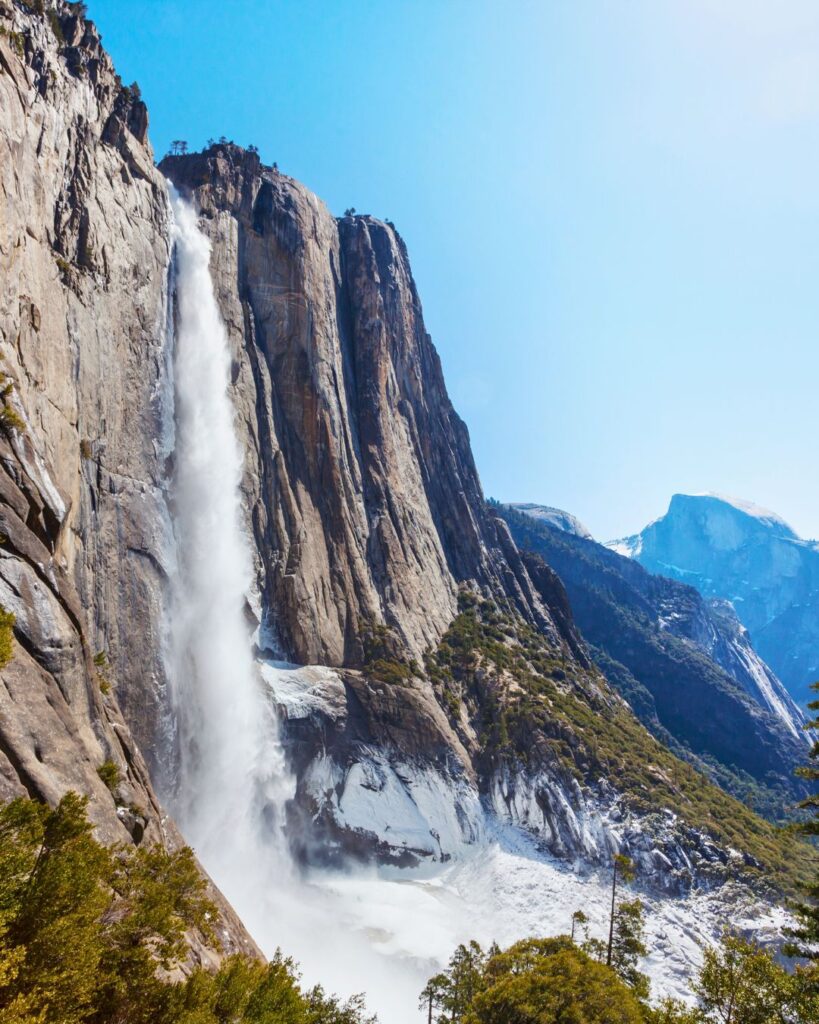
Trail Details:
- Trail Name: Bridalveil Fall Trail
- Distance: 0.8 miles roundtrip
- Elevation Gain: Minimal
- Difficulty: Easy
Best Time to Visit:
Flowing year-round, Bridalveil Fall is best visited in spring when the flow is at its strongest. Mornings offer better lighting and fewer visitors.
Trail Conditions:
- Spring: Wet trails with misty conditions; be cautious of slippery rocks.
- Summer: Dry and heavily trafficked.
- Winter: Accessible but may have icy patches.
4. Ribbon Falls – Grand Canyon National Park (Arizona)
Trail Details:
- Trail Name: North Kaibab Trail
- Distance: 14 miles roundtrip (including Ribbon Falls detour)
- Elevation Gain: 1,500 feet
- Difficulty: Moderate
Best Time to Visit:
Spring and early summer are ideal for visiting Ribbon Falls, as snowmelt enhances the flow. Avoid midday heat by starting your hike early.
Trail Conditions:
- Spring: Cool and pleasant, but trails can be muddy.
- Summer: Extremely hot; start early and stay hydrated.
- Winter: Snow and ice may create slippery conditions.
5. Virginia Falls – Glacier National Park (Montana)
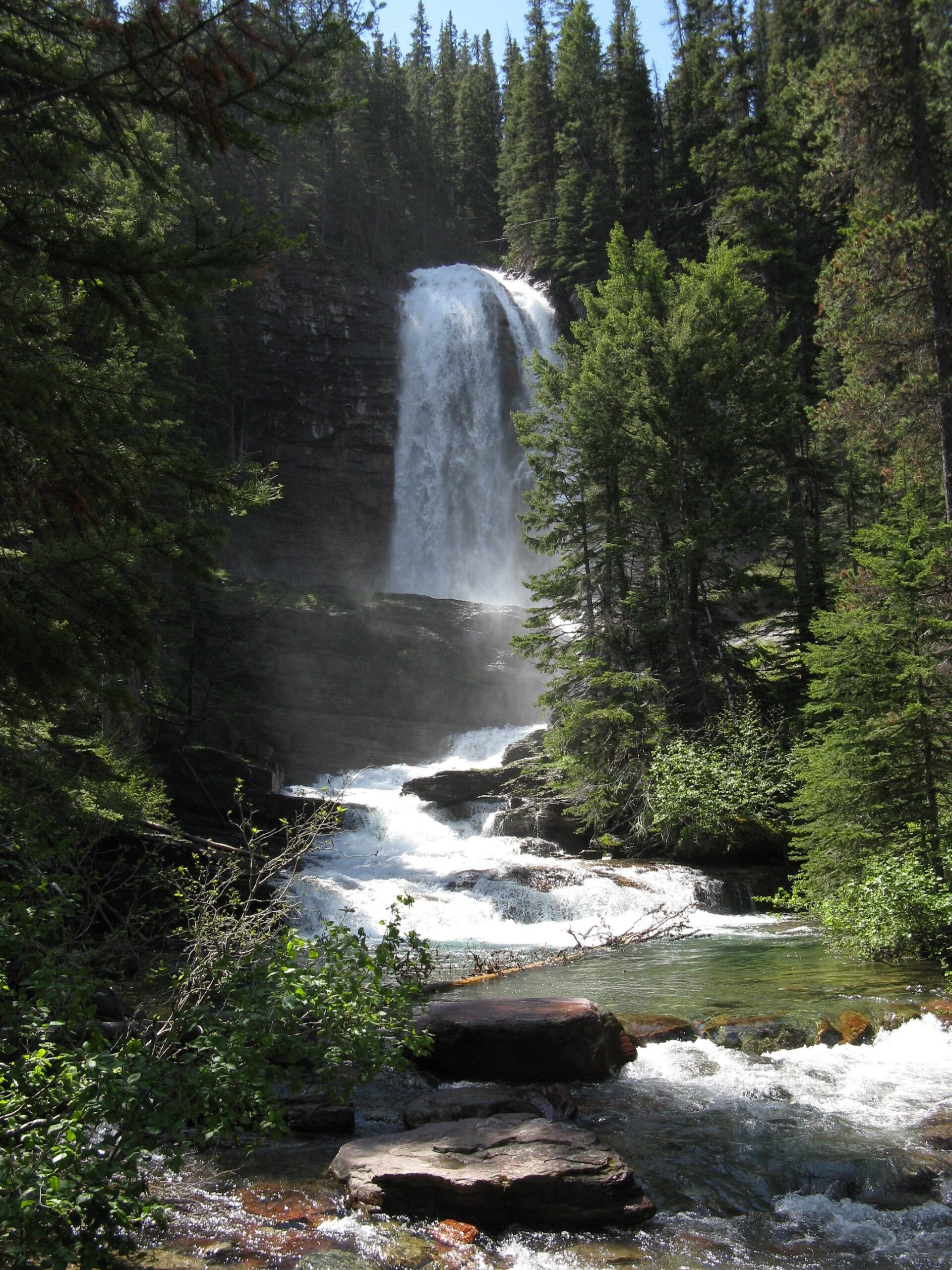
Trail Details:
- Trail Name: Virginia Falls Trail
- Distance: 3.6 miles roundtrip
- Elevation Gain: 525 feet
- Difficulty: Moderate
Best Time to Visit:
The falls are at their best in late spring and summer when snowmelt feeds the streams. Wildflowers bloom along the trail during this time.
Trail Conditions:
- Spring: Wet and muddy from melting snow.
- Summer: Comfortable and dry, with moderate temperatures.
- Fall/Winter: Portions of the trail may close due to snow.
6. Rainbow Falls – Great Smoky Mountains National Park (Tennessee)
Trail Details:
- Trail Name: Rainbow Falls Trail
- Distance: 5.4 miles roundtrip
- Elevation Gain: 1,500 feet
- Difficulty: Moderate
Best Time to Visit:
Rainbow Falls is most impressive after heavy rain or during the spring snowmelt, when the flow is at its peak. Visit in the morning to catch the rainbow effect created by sunlight hitting the mist.
Trail Conditions:
- Spring: Wet and muddy from snowmelt and rain; waterproof footwear is recommended.
- Summer: Warm and humid; pack water and insect repellent.
- Fall: Cooler temperatures make for a comfortable hike, but fallen leaves may create slippery spots.
- Winter: Icy conditions are common; microspikes or crampons may be necessary.
7. Upper Falls of the Yellowstone River – Yellowstone National Park (Wyoming)
Trail Details:
- Trail Name: Uncle Tom’s Trail
- Distance: 0.6 miles roundtrip
- Elevation Gain: 500 feet
- Difficulty: Moderate
Best Time to Visit:
Late spring and early summer offer the best views, with strong water flow from snowmelt. Visit early for fewer crowds and better lighting.
Trail Conditions:
- Spring: Muddy and wet; waterproof boots recommended.
- Summer: Dry and well-maintained but crowded.
- Winter: Trails may close due to snow and ice.
8. Ramsey Cascades – Great Smoky Mountains National Park (Tennessee)
Trail Details:
- Trail Name: Ramsey Cascades Trail
- Distance: 8 miles roundtrip
- Elevation Gain: 2,190 feet
- Difficulty: Strenuous
Best Time to Visit:
Spring is ideal, as wildflowers bloom and water flow is strong from snowmelt. Weekdays are less crowded than weekends.
Trail Conditions:
- Spring: Muddy and slippery; sturdy boots are essential.
- Summer: Warm and humid; pack insect repellent.
- Fall/Winter: Leaf-covered trails or icy patches can be challenging.
9. Brandywine Falls – Cuyahoga Valley National Park (Ohio)
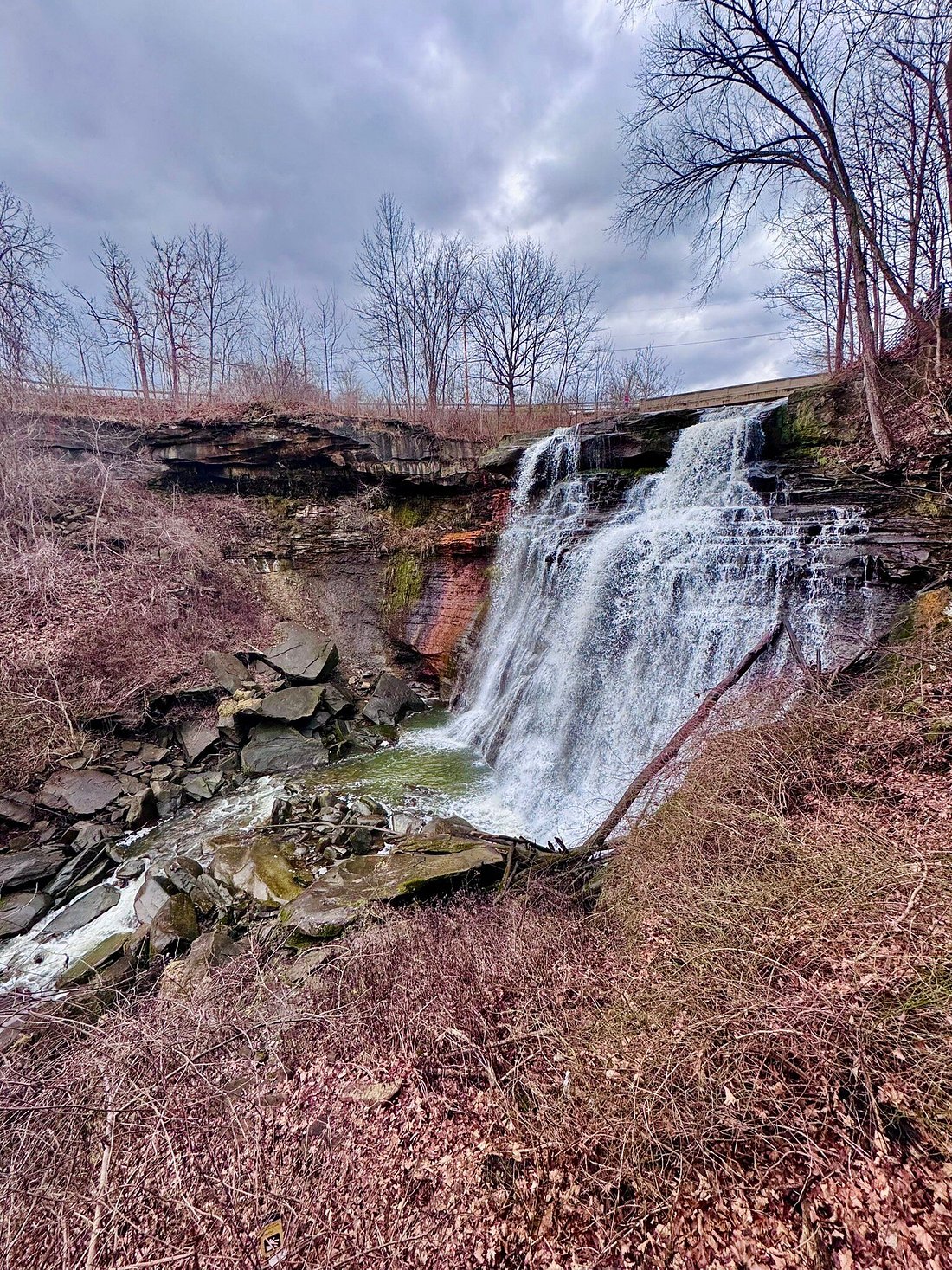
Trail Details:
- Trail Name: Brandywine Gorge Trail
- Distance: 1.5 miles roundtrip
- Elevation Gain: 160 feet
- Difficulty: Easy
Best Time to Visit:
Spring and early summer are ideal as the falls are fueled by rain and snowmelt. Fall offers beautiful foliage views, while winter provides a stunning icy display.
Trail Conditions:
- Spring: Wet and muddy due to rain; waterproof footwear is recommended.
- Summer: Dry and easily accessible, though the trail can get busy.
- Fall: Cooler weather and vibrant foliage make for a picturesque hike.
- Winter: Snow and ice can make the boardwalk slippery—use caution.
10. Waimoku Falls – Haleakalā National Park (Hawai’i)
Trail Details:
- Trail Name: Pipiwai Trail
- Distance: 4 miles roundtrip
- Elevation Gain: 800 feet
- Difficulty: Moderate
Best Time to Visit:
The falls are most impressive during the rainy season (November to March). Visit early to avoid crowds and enjoy cooler temperatures.
Trail Conditions:
- Rainy Season: Muddy trails; waterproof footwear is recommended.
- Dry Season: Warm and sunny; bring sunscreen and water.
Final Thoughts: Plan a Trip to the Top Waterfalls in US National Parks
These top waterfalls in US National Parks offer breathtaking views and unforgettable adventures. Whether you’re chasing powerful cascades or tranquil streams, these trails promise a rewarding experience. Exploring the top waterfalls in US National Parks is a perfect way to connect with nature and witness some of the most stunning sights these parks have to offer. For more national park tips, check out our blog or follow us on Instagram at @ptadventuring!

